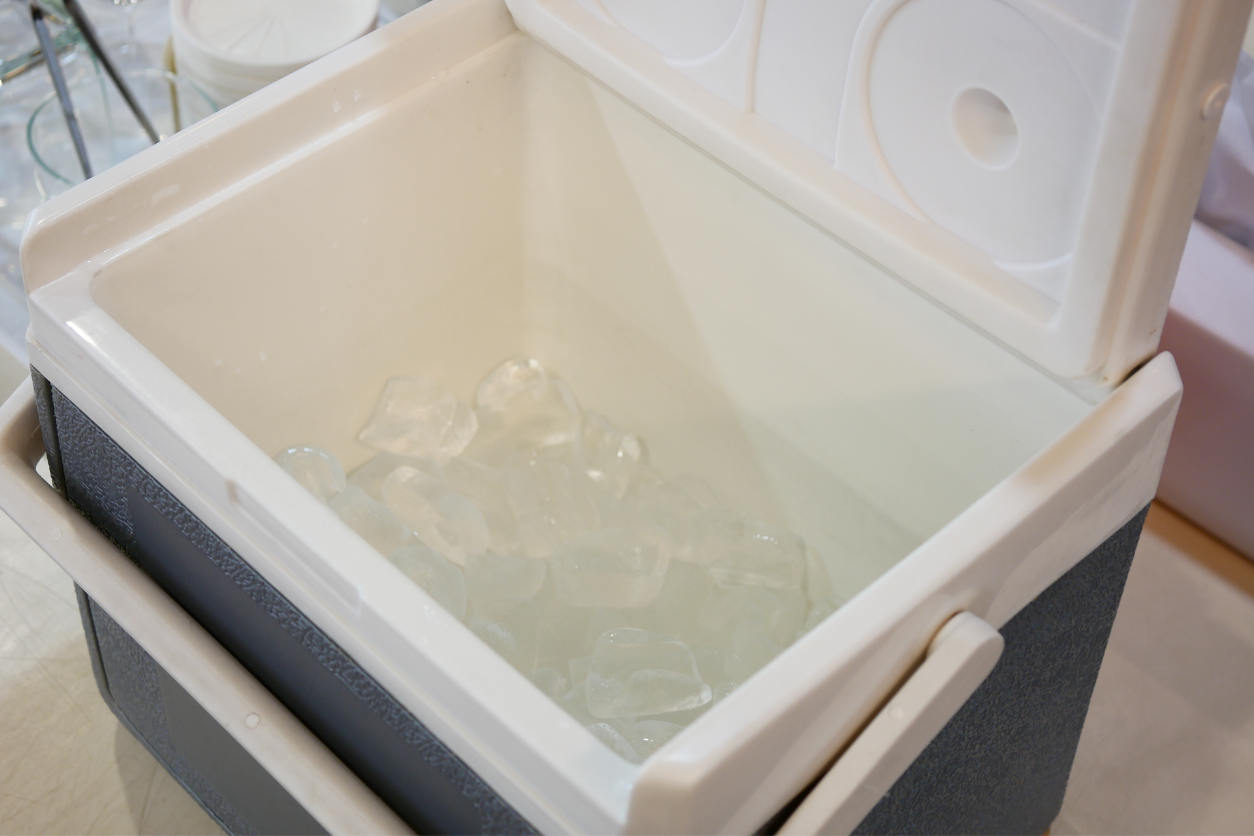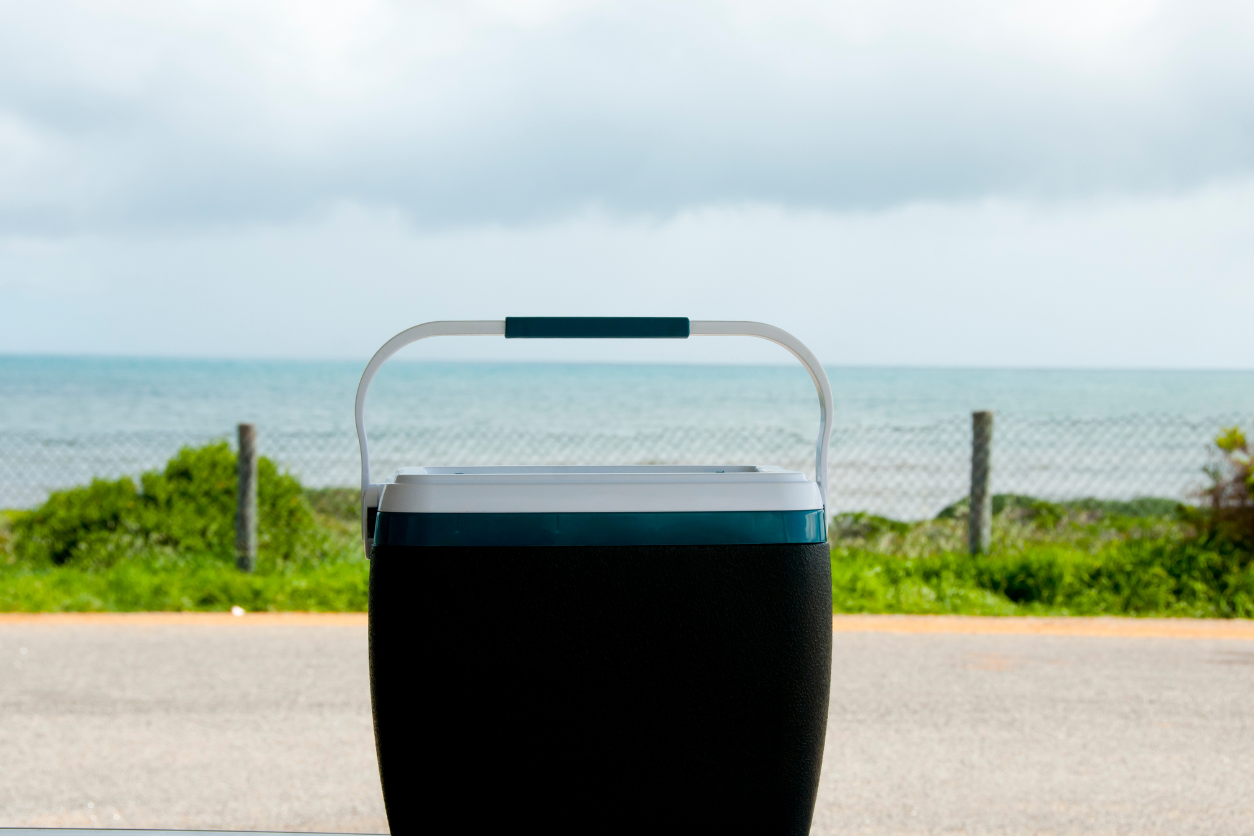There’s something about heading out on your first camping trip that makes everything feel like an adventure. But one thing that can quickly turn your trip into a hassle is when your camping cooler doesn’t do its job. No one wants to open their cooler, expecting cold drinks and fresh food, only to find everything floating in a watery mess. It’s frustrating, but often it’s not the cooler that’s the problem—it’s how you’re using it. New campers often make some common mistakes with their camping cooler, and learning how to avoid these can make all the difference in keeping your food fresh and your drinks cold.
Not Pre-Cooling the Camping Cooler
One of the biggest mistakes new campers make is skipping the pre-cooling step. It’s easy to think you can just toss in the ice and food and be on your way, but that often leads to your ice melting much faster than expected. When you don’t pre-cool your cooler, the walls and interior are warm, which means your ice is working overtime to chill everything down.
The night before your trip, fill your camping cooler with a bag of ice or frozen water bottles to bring the temperature down. This way, when you’re ready to pack your food and drinks, the cooler is already cold, and the ice you add will last much longer.
Using the Wrong Size Cooler
Another common mistake is choosing a cooler that’s too small for your needs. It’s tempting to grab something compact to save space, but a cooler that’s too small won’t hold enough ice or food for your trip. Worse, it can cause your ice to melt faster due to the lack of insulation space.
A general rule of thumb is to use the two-to-one ratio: two parts ice to one part food. If your cooler is too small, you won’t be able to pack enough ice to keep everything cool. Opt for a larger cooler if you’re heading out for more than a day or two, and make sure you’re allowing enough room for plenty of ice.
Overpacking the Cooler
On the flip side, overpacking your cooler is another rookie mistake. Cramming everything in without a plan leads to poor organization, making it difficult to access what you need. Plus, when your cooler is too full, there’s less room for air circulation, which can prevent your ice from cooling efficiently.
Instead of stuffing everything in haphazardly, take some time to organize your cooler. Pack your food and drinks in layers, with items you’ll need first on top. This keeps everything more organized and helps prevent you from leaving the lid open too long as you rummage for something at the bottom.
Forgetting to Use Block Ice

Many new campers rely solely on bags of cubed ice, which isn’t necessarily wrong, but it’s not the most efficient method for keeping things cold long-term. Cubed ice melts faster because it has more surface area exposed to the air, which means you’ll find yourself dealing with melted ice and soggy food sooner than you’d like.
A better approach is to use a combination of block ice and cubed ice. Block ice melts much more slowly and stays cold longer, giving you more consistent cooling throughout your trip. You can easily make your own block ice by freezing water in large containers or buy it from a store. Use the block ice to line the bottom of your cooler, and then sprinkle cubed ice around your food and drinks to fill in the gaps.
Opening the Cooler Too Often
This is probably one of the easiest mistakes to make, especially when everyone on the trip is grabbing drinks or snacks throughout the day. Every time you open your camping cooler, you let in warm air, which quickly melts the ice. It might not seem like a big deal in the moment, but it adds up over time.
To avoid this, consider separating your drinks from your food. Having a smaller, secondary cooler just for beverages means that your main cooler—the one with the perishables—stays closed most of the time. You can also try to plan ahead, getting out what you need all at once instead of opening the cooler repeatedly.
Not Draining Melted Water
While it might seem counterintuitive, leaving melted water in your cooler can actually help keep things cold. Water has a higher thermal mass than air, meaning it holds cold longer. If you drain the water too often, you’re letting warm air take its place, which can cause your ice to melt even faster.
That said, if your food is sitting in water, it can become soggy and unappetizing. The trick is to strike a balance. You don’t need to drain your cooler every time you see a little water, but if it starts to get too high and risks soaking your food, go ahead and let some out.
Not Freezing Your Food Beforehand
If you’re packing meat, dairy, or other perishables, don’t forget to freeze what you can before heading out. This not only keeps your food fresh longer, but it also acts as additional cooling power inside the camping cooler. Frozen food helps keep the surrounding items cold, reducing the amount of ice you need.
Pack frozen items at the bottom of the cooler and layer other refrigerated items on top. This way, as the frozen food thaws, it keeps the rest of the cooler at a lower temperature, extending the life of your ice and keeping everything fresh.
Packing Room Temperature Items
Throwing room temperature items into your camping cooler is a surefire way to melt your ice quickly. If your food and drinks are warm when you pack them, your ice will have to work extra hard to bring everything down to the right temperature.
Make sure everything you pack is either frozen or refrigerated before it goes into the cooler. This way, your ice can focus on maintaining the cold, rather than cooling down room temperature items.
Not Using Ice Packs for Added Efficiency
While ice is essential, adding reusable ice packs on top of everything can give your cooler an extra layer of insulation. Ice packs are designed to stay cold longer, and when placed at the top of your cooler, they help trap cold air inside while keeping warm air out.
You can also use ice packs strategically to separate layers of food, adding even more efficiency to your cooler. This way, every layer stays cold without having to open the cooler as often.
Ignoring Cooler Placement
Where you place your cooler at the campsite matters more than you think. Leaving it in direct sunlight or in a hot car trunk can drastically reduce its cooling efficiency. The sun heats up the cooler’s exterior, which causes the ice inside to melt faster.
Instead, keep your camping cooler in the shade whenever possible. Under a tree, a picnic table, or even covering it with a reflective blanket can help keep the cooler’s exterior cool, extending the life of your ice and keeping your food fresh longer.
FAQs
How long can a camping cooler keep food cold?
The length of time a camping cooler can keep food cold depends on factors like the type of cooler, the amount of ice, and how often it’s opened. High-quality coolers can keep food cold for up to 5-7 days if packed and maintained properly.
What’s the difference between a hard cooler and a soft cooler?
Hard coolers are typically more durable and have better insulation, making them ideal for longer trips. Soft coolers are lighter, easier to carry, and more suited for short day trips or when you need portability over long-lasting cooling.
Should I use dry ice in my camping cooler?
Dry ice can be effective for keeping items extremely cold, even frozen, but it should be used with caution. Make sure your cooler is compatible with dry ice and avoid placing it directly on items that don’t need to be frozen. Also, handle dry ice carefully as it can cause burns.
Can I use salt to make my ice last longer?
Yes, adding a little salt to your ice can lower the freezing point of water, helping your ice stay frozen longer. However, this method works best with block ice and may cause the ice to melt more evenly rather than in chunks.
Is it okay to put beverages like soda or beer directly in the cooler with ice?
Yes, placing beverages like soda or beer directly in the cooler is fine, but keep in mind that as the ice melts, the water might make the labels peel or leave your cans a bit messy. You can use a separate cooler for drinks or keep them in a container within the main cooler.
What’s the best way to clean a camping cooler after a trip?
To clean your camping cooler, first empty it of all contents, then wash it thoroughly with warm water and mild dish soap. You can also use a mixture of water and baking soda to scrub away any lingering odors or stains. Make sure to dry the cooler completely before storing it.
How should I store my camping cooler between trips?
Store your camping cooler with the lid slightly open to allow air circulation, preventing mold and mildew from forming. Keep it in a cool, dry place, and consider wiping it down with a disinfectant before storing it if it had perishable items inside.
Can a camping cooler be used for hot items?
While coolers are primarily designed to keep things cold, they can also retain heat. However, they are not as effective for keeping hot items warm over long periods as they are for maintaining cold temperatures. If using for hot food, line the cooler with towels or insulation to help retain heat.
Why is my camping cooler not keeping things cold?
Common mistakes like not pre-cooling, overpacking, or using only cubed ice can reduce the efficiency of your camping cooler. Addressing these issues can help improve performance.
How much ice should I use in my camping cooler?
Follow the two-to-one rule: two parts ice to one part food and drink. This ensures there’s enough ice to maintain the right temperature throughout your trip
What’s the best way to pack a camping cooler?
Pack in layers, with block ice on the bottom, followed by frozen and refrigerated food. Use cubed ice to fill in gaps and keep the cooler organized.
